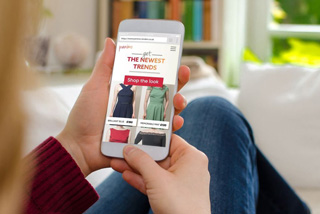
More payment options create checkout success

3 ways to make practical use of real-time payments

Business-to-business (B2B) payments rank among the fastest-growing segments for e-commerce. In June 2022, Forrester Research predicted that B2B e-commerce sales would exceed $2 trillion in 2023 and $3 trillion by 2027. Covid-19 accelerated buying behavior for consumers and businesses who shifted to online and digital experiences, and this change is proving to have a lasting impact.
Buying organizations are increasingly looking for convenient and innovative payables solutions that can improve visibility, security, efficiencies and savings. This has been demonstrated in the rise of commercial cards – business cards, fleet, corporate and purchasing cards.
Sellers realize many benefits from accepting commercial cards in-person and online. They streamline acceptance processes, ease the demands on staff, reduce days to receivables and improve the customer experience. The downside is that commercial cards often have the highest interchange rates of all card types.
Businesses and government agencies that accept a large volume of commercial card payments can reduce related expenses through Commercial Card Optimization. By capturing additional transaction details for commercial card purchases at the time of payment – the card brands refer to this as Level 2 and Level 3 data – companies can qualify for reduced interchange programs on their commercial card payments.
When additional data is collected and transmitted on each transaction authorization, it helps to better authenticate the transaction, providing information about the underlying transaction to the purchaser and the card brand. By improving authentication with additional details, the transaction carries less risk and qualifies for a lower interchange rate. While business-to-business (B2B) companies and government agencies are an obvious fit for the program, any company that conducts B2B transactions with vendors, partners, contractors, and service providers can benefit. Some examples of B2B purchases are office supplies, computer equipment, telecommunications, shipment and delivery, consulting services and catering.
Commercial card interchange rates vary by card brand, as well as card type, input method and transaction size, but regardless, the savings add up. Typical network interchange rates from Visa for corporate purchasing cards range from 2.70% for Level 1 data, 2.50% for Level 2, and 1.90% for Level 3. Additionally, for transactions over $10,000 – considered Level 3 large ticket – interchange rates drop to 1.45%.*
Providing Level 3 data does not fully guarantee that the transaction will qualify for Level 3 interchange rates. Qualification depends on multiple factors such as card type and the quality of the Level 3 data provided with the transaction.
The opportunity to save significant acceptance costs can really add up. However, the challenge is that the data required to achieve Level 2 and Level 3 savings is both specific and complicated.
Most business leaders want to concentrate on running the business – not optimizing interchange costs. With our Commercial Card Optimization program, you can tap into the knowledge of Payment Optimization Consultants and take advantage of our backend software that will automatically populate the data needed to qualify commercial card payments for the lower interchange rates.
By proactively capturing all the data points necessary to meet Level 2 and Level 3 interchange requirements, our Commercial Card Optimization Service offers our customers a significant savings opportunity. In general, clients have realized an average of 0.55-1.5% decrease in their average commercial card acceptance rates.*
Don’t leave money on the table. An estimated savings can be calculated by our Payment Optimization Consultants, based on your company’s existing payment data.
To learn more about how outsourcing Commercial Card Optimization can help, read our e-book.
* Sample rates for illustration purposes. Refer to Visa and Mastercard interchange tables for specific rates.


